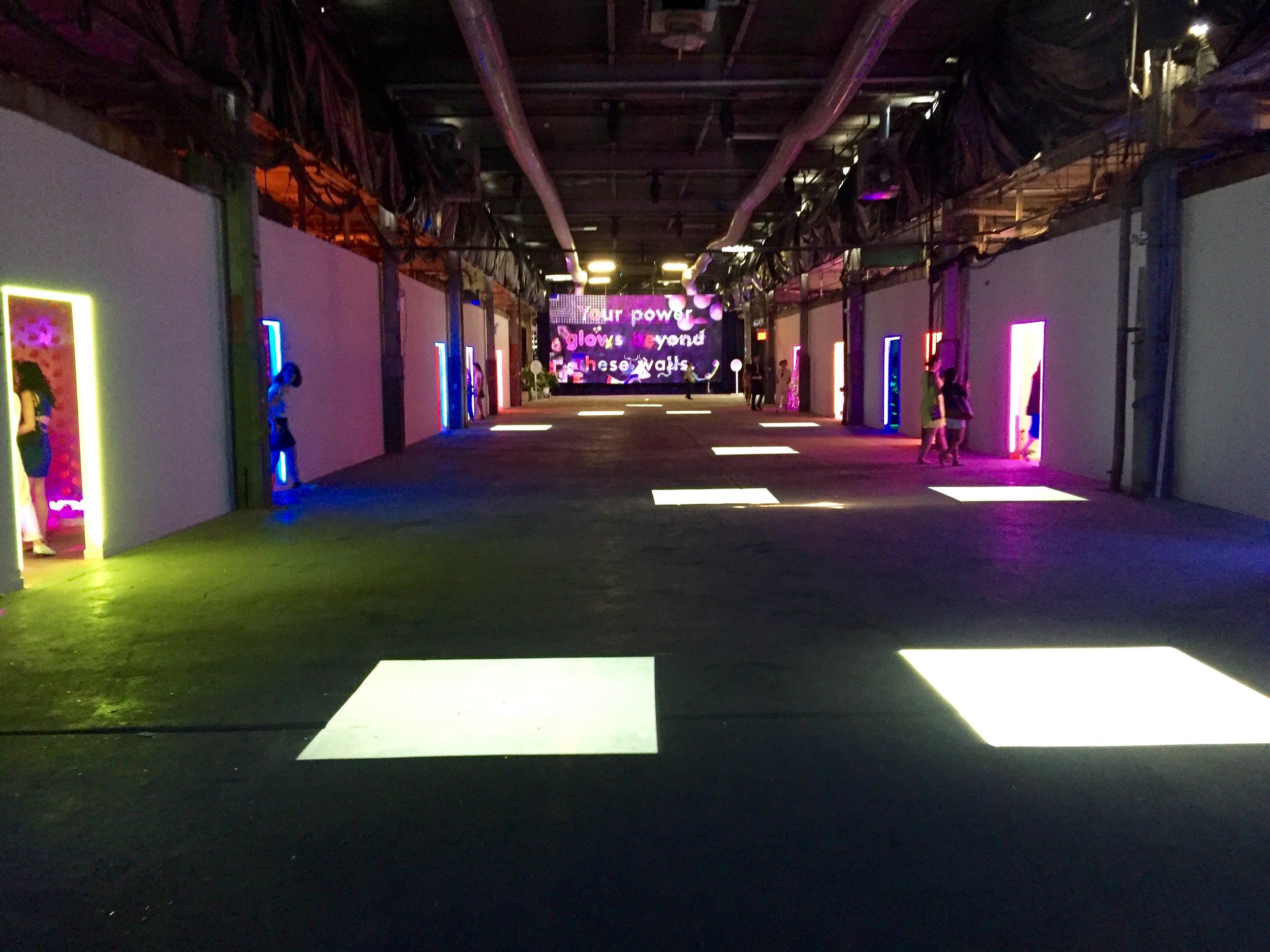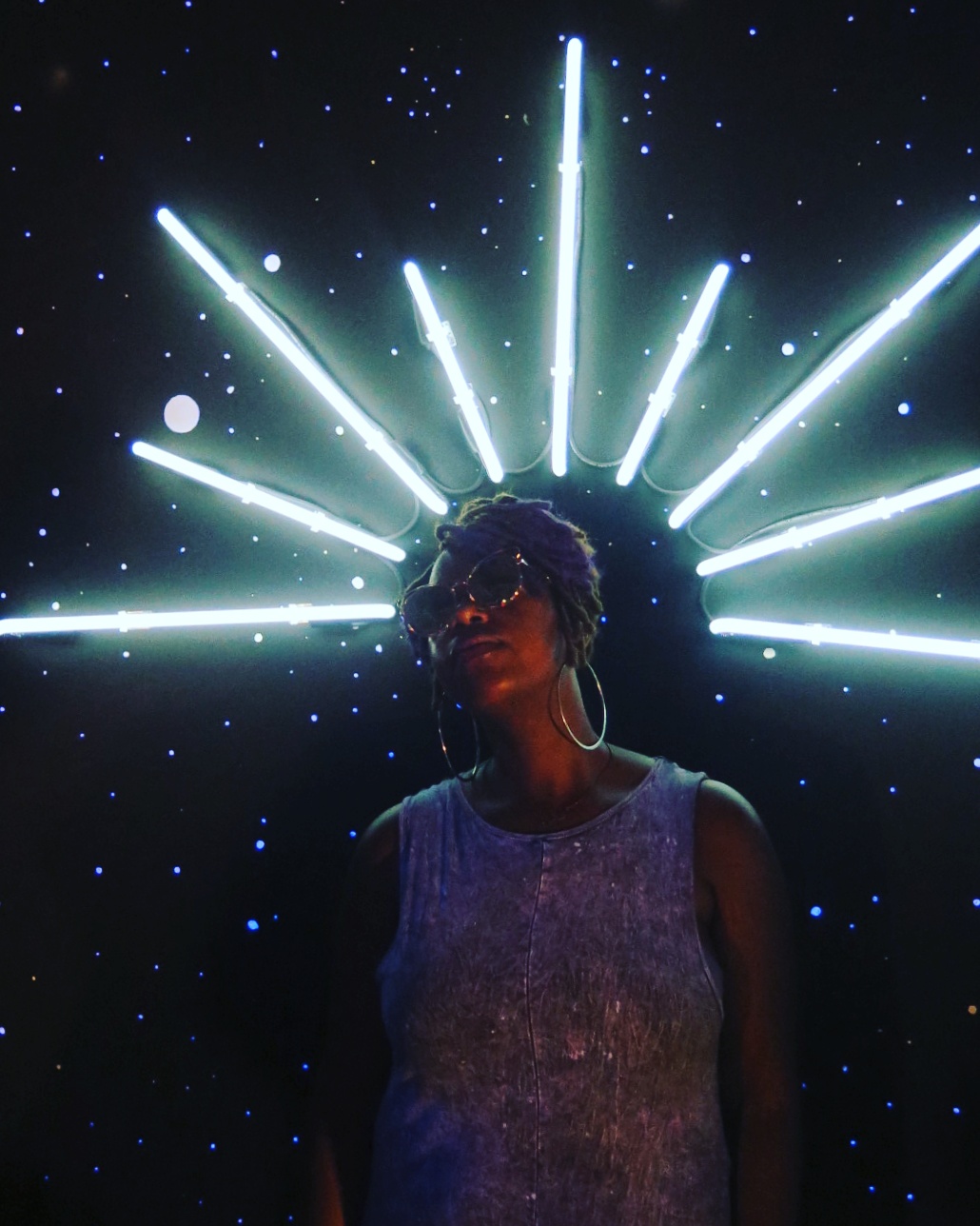29 Rooms
Kali Abdullah
This past weekend Refinery29 created one of the coolest interactive installations I've been to in a long time. My favorite art enthusiast and adventure sidekick Cory and I were so stoked for this event that we talked about it for days and made sure we arrived there early to avoid a long wait and major queuing. Open for only three days (September 9-11) visitors had the opportunity to explore 29 Rooms and immerse themselves into a wonderland of fashion, beauty, design, art, and technology while being able to capture and share the amazing moments and obligatory selfies on social media platforms.
The 29 Rooms event took place in a massive 80,000 square foot warehouse in Bushwick Brooklyn. Each room had a different theme, some were designed by individual artists, and others collaborated with various brands such as Perrier, Ulta, Papyrus, Google and Michael Kors. Some of the collaborators included artist Baron Von Fancy, Broad City‘s Abbi Jacobson, singer Tinashe, actor Adrian Grenier, artistic director for Diesel Nicola Formichetti, RuPaul, makeup artist Ryan Burke, and interactive artist Daniel Rozinare.
"Show Your Pride" room, photo by Kali Brown
Ulta's "Beauty Wonderland" Room, photo by Kali Brown
Lonely Whale Foundation "Turn the Tide" room, photo by Kali Brown
Adwoa Aboa's "Gurls Talk" room, photo by Kali Brown
The most popular rooms were those that combined interactivity with great photo opp's, such as the Gurls Talk room created by founder Adwoa Aboa. The room had an installation with over 500 old-school pink telephone receivers hanging from the ceiling.
When you put the gold phones to your ears you heard various voices. Later I learned that the people speaking through the phone were women that Aboah admires like activist Erica Garner, model Cara Delevinge and Denise Gough.
In the “You-niverse” room you could get an "aura photo" taken or a Polaroid portrait that reads your spiritual energy through color. The line for this room was very long and you had to pay a $15 fee for the picture so I skipped that and just took cool photos in the room decorated like a moonscape, with tons of brightly lit stars and moon-like sand covering the floor.
Perrier "Beyond the Bubbles" Room, photo by Kali Brown
One of my favorite rooms was the “Beyond the Bubbles” room created by Perrier. It was filled with hundreds of balloon displays to give the illusion of bubbles. Also, I loved RuPaul’s “Wig Out” room, which had these amazing over the top wigs that you could pose under in a salon chair.
Here are some of my favorite flicks while at 29 Rooms.
Ford's "Garden of Energi" room, photo by Kali Brown
Ford was promoting its environmentally-friendly Fusion Energi car, in a glowing garden installation. But what made Ford really win was the complimentary rides they offered to guest as they were leaving the event. Our driver Joe was awesome and got us to our next destination in less than ten minutes.
In our complimentary Ford car
Overall it was a wonderful experience. Some rooms were more interesting than others and it was a little sensory overload, but Cory and I had a blast. It was a great event and I can’t wait until next year!


























































